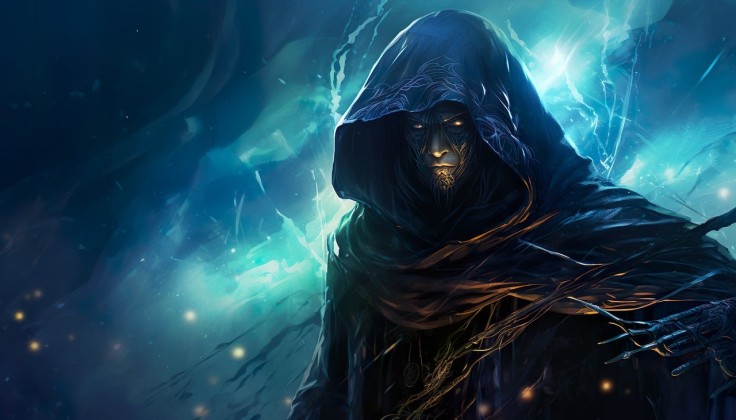
In the gaming industry, where visuals are what captivates and immerses players, the art creation process has undergone a seismic shift. Artificial Intelligence (AI) has emerged as a powerful tool offering artists a means to accelerate their creative workflows and explore new realms of creative expression.
AI in Video Games: a Creative Catalyst
By leveraging machine learning algorithms, neural networks, and other sophisticated technologies, an experienced game art studio such as Inkration can generate a vast array of concept art, textures, and visual assets at an unprecedented pace.
One of the most significant advantages of AI art generation is its ability to enhance ideation.
This technology can serve as a wellspring of inspiration, allowing artists to explore countless iterations and variations of their ideas.
Moreover, AI can assist in automating repetitive tasks, such as generating textures, patterns, and backgrounds. This frees the professionals up to focus on the more nuanced aspects of the craft, such as character design, environmental storytelling, and overall artistic direction.
Currently, game art vendors most commonly use AI for:
Concept exploration. Generating diverse character designs, environment concepts, and prop ideas through text prompts or reference images. This is valuable for rapid prototyping and brainstorming.
Procedural creation. Generating entire levels, landscapes, and even cities with specific styles and characteristics.
Upscaling & detailing. Increasing the resolution and detail of existing assets, enhancing their visual quality without manual effort.
Texture & material generation. Generating realistic textures and materials based on existing samples or text descriptions, adding richness and variety to visual assets.
Style transfer. Applying specific artistic styles to assets, ensuring visual consistency, or creating unique stylistic variations.
Customization & personalization. Personalizing assets based on player preferences or gameplay choices fosters unique experiences.
While AI can certainly revolutionize asset creation, its impact extends far beyond that. Here are some additional uses.
Some additional applications of AI include:
Elevated asset quality. AI tools can intelligently add realistic micro-textures and fine-tune material properties in visual assets. With AI, ray tracing is possible without the manual burden. It can seamlessly integrate realistic reflections and shadows and even create dynamic weather effects. AI-powered techniques like inverse kinematics, motion capture, and emotion recognition can be used to create fluid, contextually aware movements and expressive faces for characters.
Smoother performance & flexibility. AI can significantly compress and simplify game assets based on hardware limitations, ensuring smooth performance across different platforms and devices. Neural style transfer lets artists seamlessly adjust the shape, color, size, and even styles of assets in real-time, creating variations suitable for different environments, times of day, or even player choices.
The uses beyond UI:
Procedural content generation. Vast, unique worlds and experiences can be generated with ML models without the need for hand-crafting. AI can generate landscapes, quests, dungeons, and more, adding limitless replayability and exploration.
Personalized storytelling. Game narratives can be tailored to player choices and preferences. AI can dynamically adjust storylines, dialogue, and character interactions, offering truly unique experiences for each player.
Game balancing & testing. AI can automate and streamline game balancing, ensuring fair and engaging gameplay for all skill levels. Additionally, it can simulate millions of gameplay scenarios, uncovering bugs and optimizing mechanics with unprecedented efficiency.
Challenges and Ethical Considerations of Using AI Art in Games
While the potential benefits of AI art generation are undeniable, its widespread adoption has raised concerns within the gaming community. Overreliance on AI-generated art as a final product can lead to legal issues, user backlash, and the loss of artistic integrity. One of the most pressing concerns is the risk of copyright infringement. AI models are trained on vast datasets of existing artwork, raising questions about intellectual property rights and the potential for AI to reproduce copyrighted material.
Game developers who heavily rely on unfiltered AI-generated art risk facing legal challenges and bans from platforms that strictly enforce copyright violations. Furthermore, the gaming community has expressed apprehension about the overuse of AI-generated art, fearing that it may diminish the unique vision and artistry that has traditionally defined successful games.
Players and enthusiasts alike have voiced concerns about the potential for AI art to feel generic, lacking the distinctive character and creativity that human artists bring to their work.
The Path Forward: A Balanced Approach to AI Application in Video Games
AI is already being used heavily in game development, even in triple-A titles. For example, Guerilla Games, the creator of Horizon Zero Dawn and Horizon Forbidden West, employed a procedural content generation technique to create the game's expansive and detailed landscapes, expertly combining AI and human involvement to craft the game's fantasy world.
That being said, approaching the AI art implementation correctly requires a balanced and responsible approach, one that harnesses the technology's potential while respecting artistic integrity and ethical considerations. This is where professional artists play a crucial role, serving as guardians of creative vision and navigators of the AI landscape. Professional game artists possess the expertise to leverage AI as a powerful tool for inspiration and concept generation while maintaining artistic control over the final product. They understand the nuances of visual storytelling, character design, and environmental narratives, ensuring that AI-assisted art remains true to the game's overall artistic direction, and they also take all the risks into account.
Striking this delicate balance between reaping its benefits and addressing the potential risks of AI is becoming increasingly important as the gaming industry continues to embrace the technology for art generation. Collaborating with professional 2D game artists, such as Inkration, allows game publishers to harness the power of AI while upholding artistic integrity, avoiding legal complications, and preserving the distinctive vision that defines exceptional games.
For game publishers aiming to tap into AI's vast potential and other cutting-edge technologies while maintaining the highest standards of artistic vision in their upcoming projects, reaching out to Inkration Studio is the first and crucial step. Try it out! Get in touch with Inkration to initiate the creation of high-quality, eye-catching game art for your next game.









